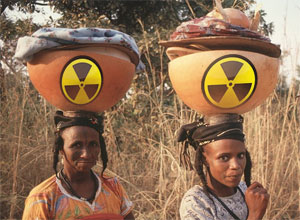Speaking on the sidelines of the 2016 African Energy Indaba Forum and Exhibition, ROSATOM Regional Vice President Victor Polikarpov stated that Africa’s true potential would remain unrealised if governments across the continent did not make the necessary energy and infrastructure investments needed to drive economic growth. This sentiment was echoed in World Bank report released earlier this week that said structural reforms were needed to alleviate domestic impediments to growth and to accelerate economic diversification across the African continent.
In his address, Brian Stathem, head of South African National Energy Association (SANEA), stressed importance of solving energy deficit in Africa now: «Africa’s potential is constrained by a lack of infrastructure; particularly energy infrastructure. Energy is the driver for social and economic development enabling education, healthcare, economic and commercial enterprise and social wellbeing». Among other notable speakers at the conference were Wolsley Barnard, director general of South Africa Department of Energy, representatives of the ministries of energy of Zimbabwe and Zambia, international organizations like World Bank, World Energy Council, African Union Commission, Power Africa.
During a panel discussion entitled, “Nuclear: The Next Steps”, expert panellists debated the merits of South Africa’s nuclear build programme and the need to expand electricity supply into the rest of the continent. “In order to combat the current energy challenge faced by South Africa and the rest of the continent, Africa needs affordable and clean baseload power such as nuclear”, said Mr. Polikarpov.
When addressing the concerns around cost he noted that “a lack of power is was far more detrimental to any economy”. Polikarpov further noted that “nuclear power should not be seen as an expense but rather as a long-term investment in the country’s future”. Mr Polikarpov understands that the initial costs of developing a nuclear power plant are high but in the long term provides the economy with affordable and reliable power, as is currently being provided by the Koeberg nuclear power station which for decades has been providing South Africa’s cheapest electricity.
ROSATOM is currently constructing several Nuclear Power Plants (NPP) across the globe, these builds are financed through different models. Finland, for instance, is using a public, private partnership model. ROSATOM is in a joint venture with the partnership and owns 34% of the plant. Another example is Turkey, who have opted for the Build Own Operate (BOO) model, in this case, the power plant is owned and operated by Rosatom until the investment is paid back, after which the plant is handed over, this model is best suited to newcomer nuclear nations. Finally, the standard EPC contract with a state credit from Russia is best suited for countries like South Africa, which have centralised grids and many years of experience in the nuclear field.
Addressing the concern about whether South Africa is capable to successfully build and safely operate a nuclear plant, Mr. Polikarpov stated that “South Africa has a fantastic track record when it comes to nuclear. It is one of the oldest nuclear nations and a founder member of the International Atomic Energy Agency (IAEA). The country has successfully been operating Koeberg for over 30 years and Safari 1 reactor for 50 years. The Safari 1 reactor is also one of the most efficiently run reactors of its type in the world today and supplies medical isotopes to over 60 countries. South Africa also has a very proficient regulatory body in terms of the National Nuclear Regulator and has some of the best nuclear physicists and engineers in the world. Yes, South Africa is more than capable to build and operate a successful Nuclear Power Plant.
24 Декабря 2025 | среда | 08:20


